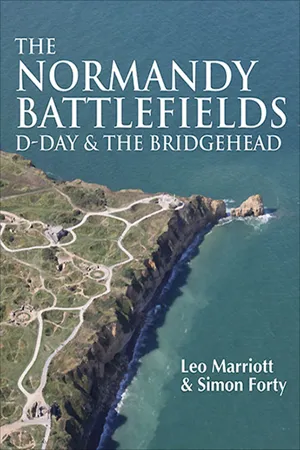
- 192 pages
- English
- ePUB (mobile friendly)
- Available on iOS & Android
eBook - ePub
About this book
Experience the battlefields of D-Day in this beautiful book combining historical images, full-color aerial photography, and informative text.
The D-Day invasion of Nazi-occupied Normandy was the most dramatic turning point of World War II. With a combination of historic and contemporary photography, along with maps and other illustrations, The Normandy Battlefields takes readers "on-site" to the sacred battlegrounds.
The armada that attacked from Britain left behind many signs of their passage. The Normandy Battlefields details what can be seen on the ground today using a mixture of media to provide a complete overview of the campaign. Maps old and new highlight what has survived and what hasn't; then-and-now photography allows fascinating comparisons with the images taken at the time, and computer artwork provides graphic details of things that can't be seen today.
The book describes the area from Cherbourg to Le Havre by way of the key D-Day locations, providing a handbook for the visitor and an overview for the armchair traveler. It covers the forces from both sides and the memorials to those young men who fought so many years ago.
The D-Day invasion of Nazi-occupied Normandy was the most dramatic turning point of World War II. With a combination of historic and contemporary photography, along with maps and other illustrations, The Normandy Battlefields takes readers "on-site" to the sacred battlegrounds.
The armada that attacked from Britain left behind many signs of their passage. The Normandy Battlefields details what can be seen on the ground today using a mixture of media to provide a complete overview of the campaign. Maps old and new highlight what has survived and what hasn't; then-and-now photography allows fascinating comparisons with the images taken at the time, and computer artwork provides graphic details of things that can't be seen today.
The book describes the area from Cherbourg to Le Havre by way of the key D-Day locations, providing a handbook for the visitor and an overview for the armchair traveler. It covers the forces from both sides and the memorials to those young men who fought so many years ago.
Frequently asked questions
Yes, you can cancel anytime from the Subscription tab in your account settings on the Perlego website. Your subscription will stay active until the end of your current billing period. Learn how to cancel your subscription.
No, books cannot be downloaded as external files, such as PDFs, for use outside of Perlego. However, you can download books within the Perlego app for offline reading on mobile or tablet. Learn more here.
Perlego offers two plans: Essential and Complete
- Essential is ideal for learners and professionals who enjoy exploring a wide range of subjects. Access the Essential Library with 800,000+ trusted titles and best-sellers across business, personal growth, and the humanities. Includes unlimited reading time and Standard Read Aloud voice.
- Complete: Perfect for advanced learners and researchers needing full, unrestricted access. Unlock 1.4M+ books across hundreds of subjects, including academic and specialized titles. The Complete Plan also includes advanced features like Premium Read Aloud and Research Assistant.
We are an online textbook subscription service, where you can get access to an entire online library for less than the price of a single book per month. With over 1 million books across 1000+ topics, we’ve got you covered! Learn more here.
Look out for the read-aloud symbol on your next book to see if you can listen to it. The read-aloud tool reads text aloud for you, highlighting the text as it is being read. You can pause it, speed it up and slow it down. Learn more here.
Yes! You can use the Perlego app on both iOS or Android devices to read anytime, anywhere — even offline. Perfect for commutes or when you’re on the go.
Please note we cannot support devices running on iOS 13 and Android 7 or earlier. Learn more about using the app.
Please note we cannot support devices running on iOS 13 and Android 7 or earlier. Learn more about using the app.
Yes, you can access The Normandy Battlefields by Leo Marriott,Simon Forty in PDF and/or ePUB format, as well as other popular books in Storia & Storia militare e marittima. We have over one million books available in our catalogue for you to explore.
Information
CHAPTER 1
PREPARATIONS
“The ardor and spirit of the troops, as I saw myself, embarking in these last few days was splendid to witness. Nothing that equipment, science or forethought could do has been neglected, and the whole process of opening this great new front will be pursued with the utmost resolution both by the commanders and by the United States and British Governments whom they serve.”
Prime Minister Winston Churchill’s House of Commons address given on June 6, 1944
Prime Minister Winston Churchill’s House of Commons address given on June 6, 1944

Troops await their turn to embark in Plymouth on the hardstanding used today for the Torpoint Ferry. The warship in the right background is USS Augusta, flagship for the Western Task Force. This Northampton class heavy cruiser was used as a presidential flagship and carried both Franklin D. Roosevelt and Harry S. Truman. Augusta left Plymouth on June 5 with Lt-Gen Omar Bradley and his staff on board. They would finally disembark and set up on French soil on June 10.
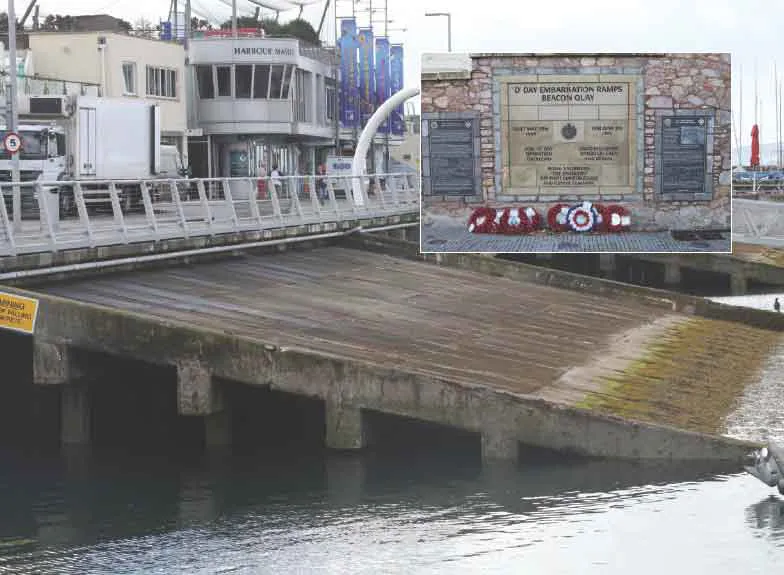
The Torquay Slipways D-Day Embarkation Hards. As the panels explain, 68 hards were built between Falmouth and Felixstowe in 1942–43 providing berths for LCTs and LSTs. Those at Torquay were unusually steeply inclined, supported by reinforced concrete frameworks. The hards were operated by a dedicated detachment. Core personnel included a Commanding Hardmaster and Embarkation Staff Officers who would oversee loading, a maintenance and repair crew, which would expand to 40 men when in operational use. Where the hards were used exclusively by American troops, the US forces provided crews.
Any great military operation requires a degree of surprise in order to achieve its objectives. In the case of a cross-Channel invasion of the French coast this was almost impossible, as the German high command was well aware that such an operation was imminent and had taken substantial steps ensure that it would not succeed. These included the costruction of formidable fixed defenses along the Channel coast, especially around ports such as Dieppe, Le Havre, and Cherbourg, and the erection of numerous obstructions and booby traps on the various beaches where a landing might occur. German forces in France and the Low Countries were under the command of Field Marshal von Rundstedt as Commander-in-Chief West and along the Channel coast of France, Belgium, and Holland was Army Group B commanded by the famous Field Marshal Erwin Rommel. Among the troops under his command was the Seventh Army, which covered Normandy and Brittany, and the Fifteenth Army covering the Pas de Calais and Flanders. At the time of the landings on June 6 there were four infantry divisions (352, 709, 711, and 716) covering the coast from Cherbourg to Honfleur and they were supported by a single Panzer division (21st Pz Div) although two more (12th SS “Hitlerjugend” and 116th Pz Div) were held further inland as a mobile reserve. A much greater concentration of infantry divisions was positioned around the Pas de Calais, although again supported by a single Panzer division.
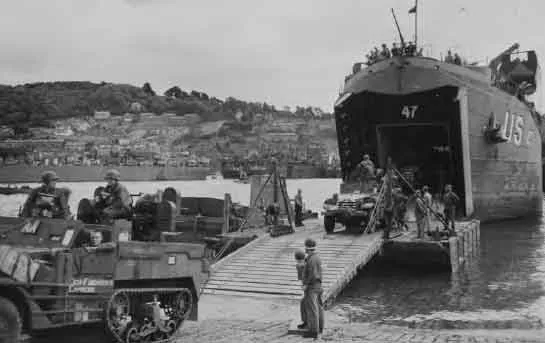
An AA halftrack backs toward LST 47. The next time it will see dry land is on Utah’s Tare Green Beach. In the background, Dartmouth in Devon.
The disposition of these forces demonstrated the uncertainty in German minds as to where the invasion would occur. Although it was impossible to hide the massive build up of forces in the UK, considerable effort was put into misleading the Germans as to the exact objectives under a scheme known as Plan Fortitude. This had several elements including the establishment of several fake Army units (notably the so-called First US Army Group led by General Patton) with dummy headquarters generating a stream of radio traffic which was intercepted by the Germans, and ensuring that a network of double agents fed back more false information. The general picture presented to the Germans was that the main invasion would take place at the Pas de Calais and any Normandy landings would be an elaborate diversion. In addition it was hinted that further landings of troops shipped directly from America would occur on the Biscay coast. These and other schemes were intended not only to deceive the Germans as to where the main landing would occur but also to keep them guessing even after the allies were establishing the Normandy beachhead.
In the event these schemes proved to be outstandingly successful. When the Seventh and Fifteenth Army headquarters received the initial reports of airborne landings early on June 6, these were dismissed as diversionary operations and when dawn broke and the whole invasion armada was visible there was still a groundswell of opinion that this was diversionary operation. This view was reinforced by the staging of a false invasion fleet across the Channel towards the Pas de Calais. Although a few surface craft were involved, the appearance of a mass of shipping on German radar screens was the result of formations of allied bombers (including No 617 Squadron, the Dambusters) flying extremely accurate flight patterns and dropping foil strips (Window) at precise points to produce the illusion of a fleet advancing steadily at 8 knots. When dawn broke the alerted defences in that area were mystified when no ships were visible. Perhaps the person most taken in by these deception measures was Hitler himself who for two vital days refused to release the 12th and 116th Panzer Divisions for action against the Allied beachhead in Normandy, convinced that further landings in the Pas de Calais were to follow. Amazingly, elements of Plan Fortitude continued to operate as late as the end of August by which time Paris had been liberated and allied troops were advancing well into Northern France.

In May 1944, the dress rehearsal for Operation Neptune took place: Exercise Fabius, six separate exercises to rehearse every possible aspect of the invasion. Here, infantrymen of the 1st Bn, Canadian Scottish Regiment, take up positions in an LCA from LSI(M) HMS Queen Emma.
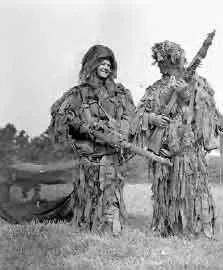
Two snipers of the 1st Canadian Parachute Bn during an inspection by King George VI, Queen Elizabeth, and Princess Elizabeth, on Salisbury Plain, May 17. The snipers wear “ghillie” camouflage suits.

5th Rangers load onto LCAs in Weymouth harbor before making their way to HMS Prince Baudouin for transit across to Omaha. Originally built in 1933–34 for Belgian State Railways, she was converted to a landing vessel in January 1943.
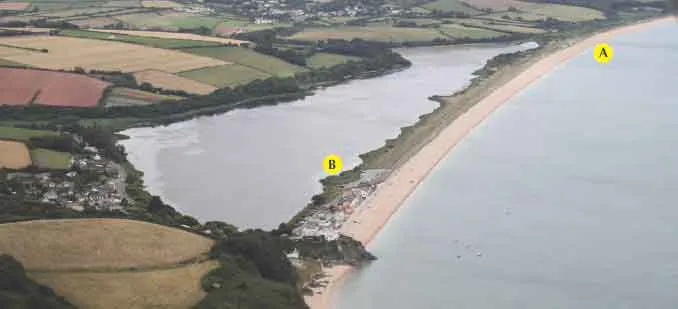
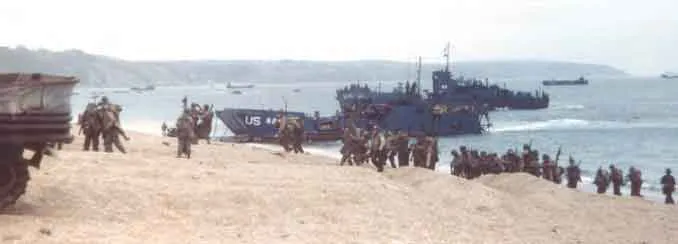


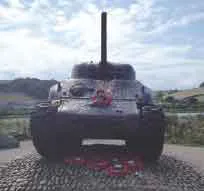
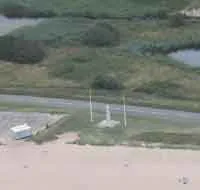
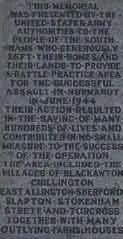
Slapton in Devon was requisitioned by the British Government in late 1943 for use by US forces destined to land on Utah Beach, which Slapton Sands closely resembled. The inhabitants were evacuated (top) at short notice and the US personnel moved in. The US Army later presented a memorial to thank the people of Slapton (right and A in aerial photo). On April 22–28, 1944, Exercise Tiger took place, and during the night of April 27 a convoy of poorly protected LSTs was attacked by E-boats leading to some 1,000 casualties. Forty years later, after tireless work by Ken Small, the full story was told. This M4 (above and B in aerial photo above left) was recovered from the sea and placed at Slapton as a memorial to those who died. The exercise pictured (left) is on Slapton Sands and shows Coast Guard-manned LCI(L)-85 which would be so severely damaged by enemy fire during the invasion that it sank later on D-Day. (See also photo page 118.)
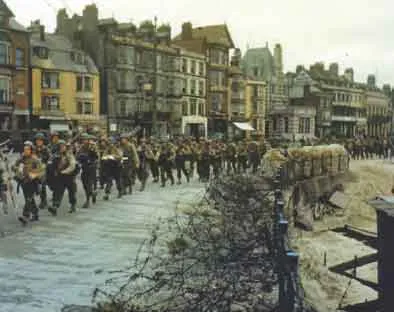
Embarkation. Rangers of the 2nd B...
Table of contents
- Cover
- Title Page
- Copyright
- Contents
- Introduction
- 1 Preparations
- 2 Airpower
- 3 Seapower
- 4 The Airborne Landings
- 5 Utah Beach
- 6 Omaha Beach
- 7 Gold Beach
- 8 Juno Beach
- 9 Sword Beach
- 10 In Memoriam
- Bibliography
- Credits